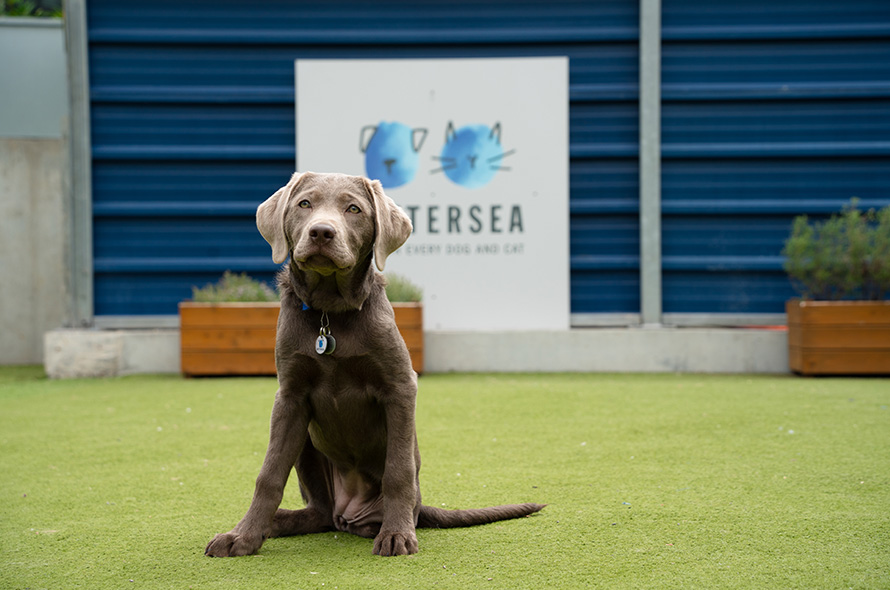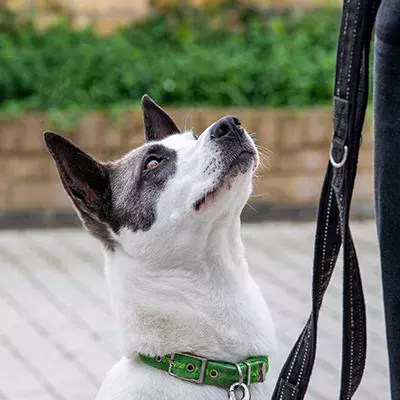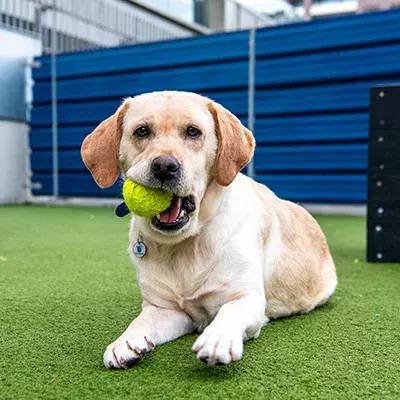An emergency stop is an important command for your dog to learn as it can be used in urgent situations that need immediate intervention.

For example, this could be used to stop your dog from running up to a potentially reactive dog, running across the road, or if your dog has become overstimulated How to calm down an overstimulated dog. The command helps to get their focus back to you and can stop a situation from escalating.
To teach the emergency stop, we will be using food as a reward. It’s helpful to find what motivates your dog, such as a high value treat like chicken or cheese.
Step 1
Start with your dog a small distance away from you. Using a treat or verbal cue, encourage your dog to come towards you. As they do, raise a treat up high above your head.
Before they reach you, throw the treat behind your dog so that they stop, turn back and fetch the treat. Continue practicing this until your dog starts to slow down or stop when you raise your hand, anticipating the treat.
Step 2
You can now introduce a verbal cue. Repeat step one, but this time say ‘stop’ as you throw the treat. You should see that your dog will expect the treat to be thrown and will prepare to stop and turn to get the reward.
Keep practicing this until your dog stops immediately when you hold your hand up and say ‘stop’.
Step 3
Continue practicing, but now when your dog stops, walk over to give them the treat. This will encourage your dog to hold their stop position, rather than relying on you to throw the treat behind them.
Remember, the aim is for your dog to stop in their tracks and stay where they are.
Step 4
Now you can start to increase the distance between you and your dog. With your dog at a distance from you, call them over and raise your hand and say ‘stop’. When your dog follows your instruction, walk up to them and reward them with a treat.
Step 5
Finally, you’ll need to practice the behaviour in different environments and with added distractions, to ensure that your dog will reliably stop when asked, no matter what the circumstances.
For example, if you have a friend to help you, get them to walk past your dog. Using your verbal cue and hand signal, encourage your dog to stop. If they end up following the friend, your dog may need some more practice.
Once you’re more confident, you can also try practicing in various locations. If you’re worried about practicing an emergency stop in a new environment, you could use a long line lead.


